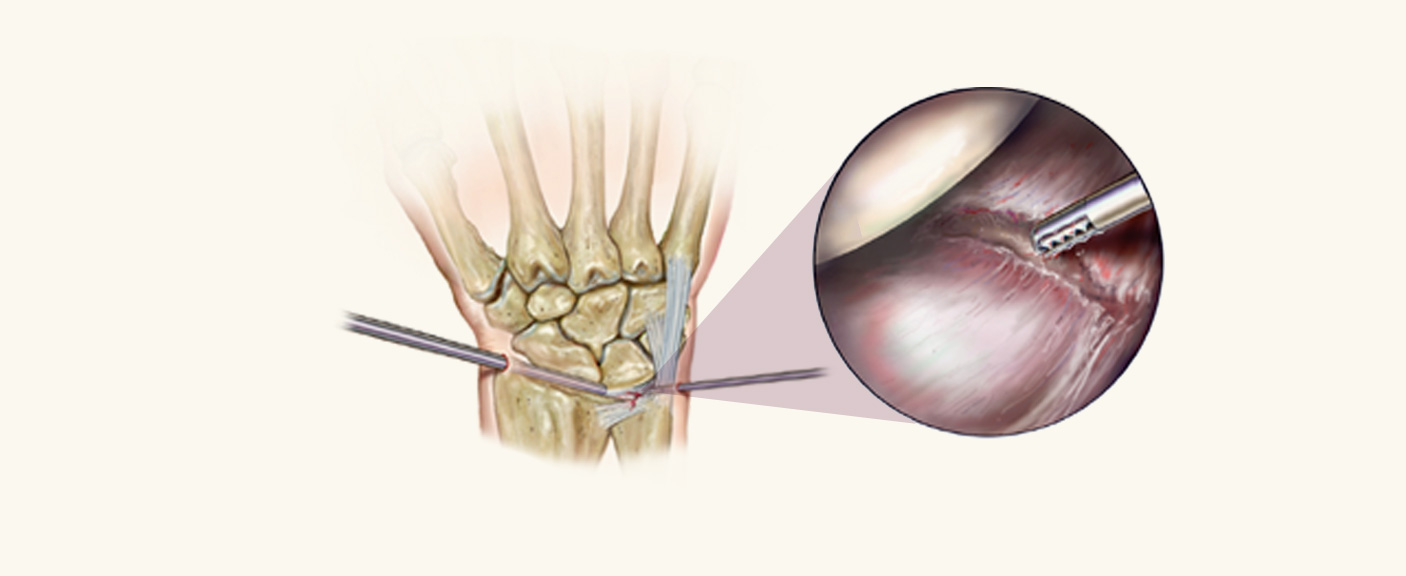
Treatment for Arthroscopic Surgery
Arthroscopic Surgery involves the use of a tiny camera during surgery for patients who require minimally invasive joint repair . The tiny camera is inserted through in an incision to the hand made by the surgeon.
The incision is between 1-2 centimeters and allows the surgeon the freedom to travel the bones, ligaments and tendons in search of the problem. Two or more incisions are made on the back of the wrist. The instruments are inserted at which point the joint can be viewed clearly. The procedure allows the doctor to fully diagnose the hand and determine the appropriate treatment. Another instrument called a shaver is used in combination with the arthroscope to cut off pieces of torn tissues.
“Involves the use of a tiny camera during surgery for patients who require minimally invasive joint repair”
Surgeons prefer this technique over open wrist joint surgery as the patient can recover much more rapidly with less trauma to the wrist. The Arthroscope is a very handy tool for surgeons as it allows photos to be taken without fully opening the joint. The Arthroscope can also shoot live video of the joint during surgery through the use of a television set. Salt water (AKA Saline) is pumped inside to push aside debris that may get in the way of the Arthroscope. A light is attached to the Arthroscope to illuminate the inside of the joint.
Why Arthroscopy is Necessary?
When the patient is suspected of having a disease or injury that damages tissue around the wrist. Arthroscopic surgery may be necessary if the patient has had a record of examinations such as physical exams, x-rays, MRI but were unsuccessful. Arthroscopic Surgery is the final stage in diagnosing the source of the wrist pain and is the most accurate of all. Common problems found in the wrist and treated with arthroscopic surgery includes.
Chronic Wrist Pain: Arthroscopic surgery is an efficient way to find the source of chronic pain within the wrist when other examinations have failed. Once the issue is spotted the surgeon could treat the problem at that moment.
Wrist Fractures: When bone breaks, small fragments remain within the wrist unless other wised removed by arthroscopic surgery. Arthroscopic surgery allows the surgeon to align the broken bones together and reinforce them through pins, wires and or screws.
Ganglion Cysts: Also known as bible cyst and used interchangeably is a swelling that appears around the wrist, or foot. They develop naturally and is unclear what causes them. The cyst is attached to the joint of the wrist and is filled by fluid that is presumably flowing out of the joint but does not circulate back to the wrist joint. Arthroscopic surgery can remove these pouches of fluid and reduce the likelihood of occurrence.
Ligament/TFCC Tears: Ligaments are connective rubber band like tissues that connect to bones. They provide stability and support to joints. When ligaments suffer torn damage caused by a hard fall or other type of injury, they become painful with movement. Arthroscopic surgery could repair the damages inflicted on ligaments.
Carpal Tunnel Release: Carpal tunnel syndrome causes numbness or a tingling sensation in the hand. The sensation is similar to millions of ants roaming around your hand. Due to the natural tightness in space underneath the thick wrist band, pressure may build from irritation or swelling of tissues. Arthroscopic surgery could provide relief by cutting the band that wraps the tissues. giving it more breathing room and reduce further inflammation.
Advantages of Arthroscopic Surgery
The biggest advantage to undergo Arthroscopic surgery is that the joint does not need to be opened completely during surgery. Regional anesthesia is applied to the hand and arm. The Arthroscope and Shaver is a minimally invasive outpatient procedure, making recovery much faster and complications less likely.
After Surgery
After the surgery, the incisions are closed with stitches. Sometimes a splint is used. After Arthroscopic surgery has been performed it is highly recommended that the wrist is elevated for the next 2-3 weeks. Bandages should be replaced, kept clean, and dry. When possible and an ice pack should be used to keep swelling to a minimum.
Recovery Time
Recovery varies depending on the patient and surgery.
